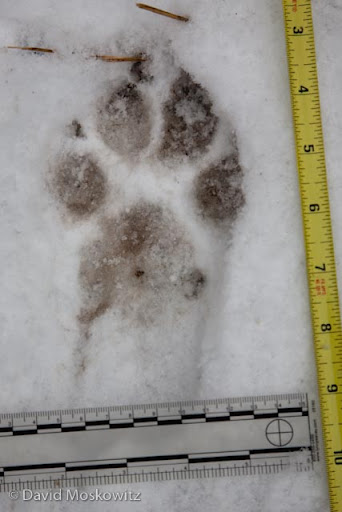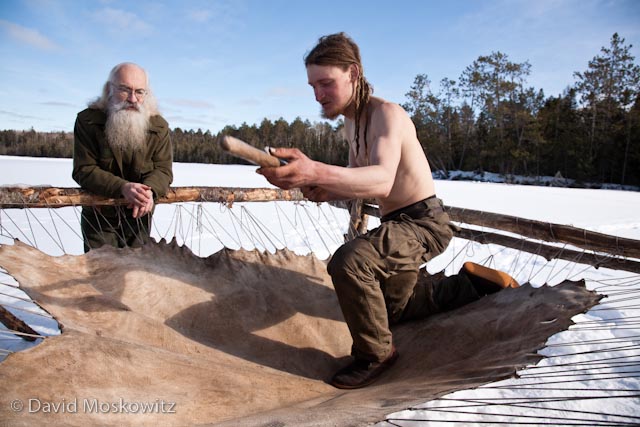
This past weekend the Mount St. Helens Institute, in collaboration with the Mount Adams Institute, hosted a Cybertracker Conservation Track and Sign Certification Event close to the town of Trout Lake in the southern Washington Cascades, a landscape with a diversity of plant communities, striking geography, and bountiful wildlife.
Matt Nelson, Track and Sign Specialist, assisted me in the delivery of the evaluation. Here Matt is leading a discussion around the remains of a mule deer which was killed and butchered by a human hunter and subsequently scavenged by coyotes. Questions around this carcass led to a lengthy and detailed discussion on how to differentiate the patterns of sign left behind around carcasses by other large carnivores such as mountain lions, black bears, and wolves.
Naturalist Dan Daly inspecting a beaver chewed stick along the banks of the Klickitat River. Dan performed impressively and with a score of 98.5, earned his second Level 3 Certification. Nice work Dan!
Matt Nelson photographed me leading a discussion on the identification of a collection of feathers from a Ruffed grouse found on the side of a forest road. David Scott (Track and Sign Specialist) and Casey McFarland (Specialist and Evaluator for Cybertracker Conservation) are the authors of the excellent resource pictured here, Bird Feathers: A Guide to North American Species.
The camber of this primary wing feather is an important clue about the original owner of it. The heavy downward curve in wing weathers is typical for game birds such as Ruffed grouse. This curve helps give them explosive take off power, an important survival trait for ground birds trying to escape terrestrial predators.
Congratulations to everyone who earned a Track and Sign Certification through the Event! For a complete list of certified Trackers in North America click here.
Level 1
Corwin Scott
Hanna D. Gomes
Fred Engelfried
Level 2
Heather Harding
Levi Old
Level 3
Maureen Corlas
Ashley Conley
Daniel P. Daly


















